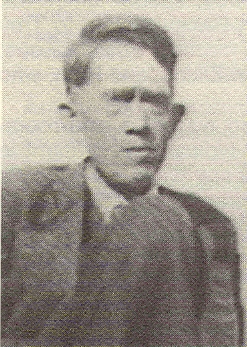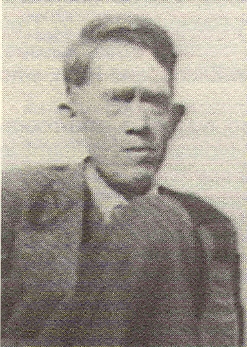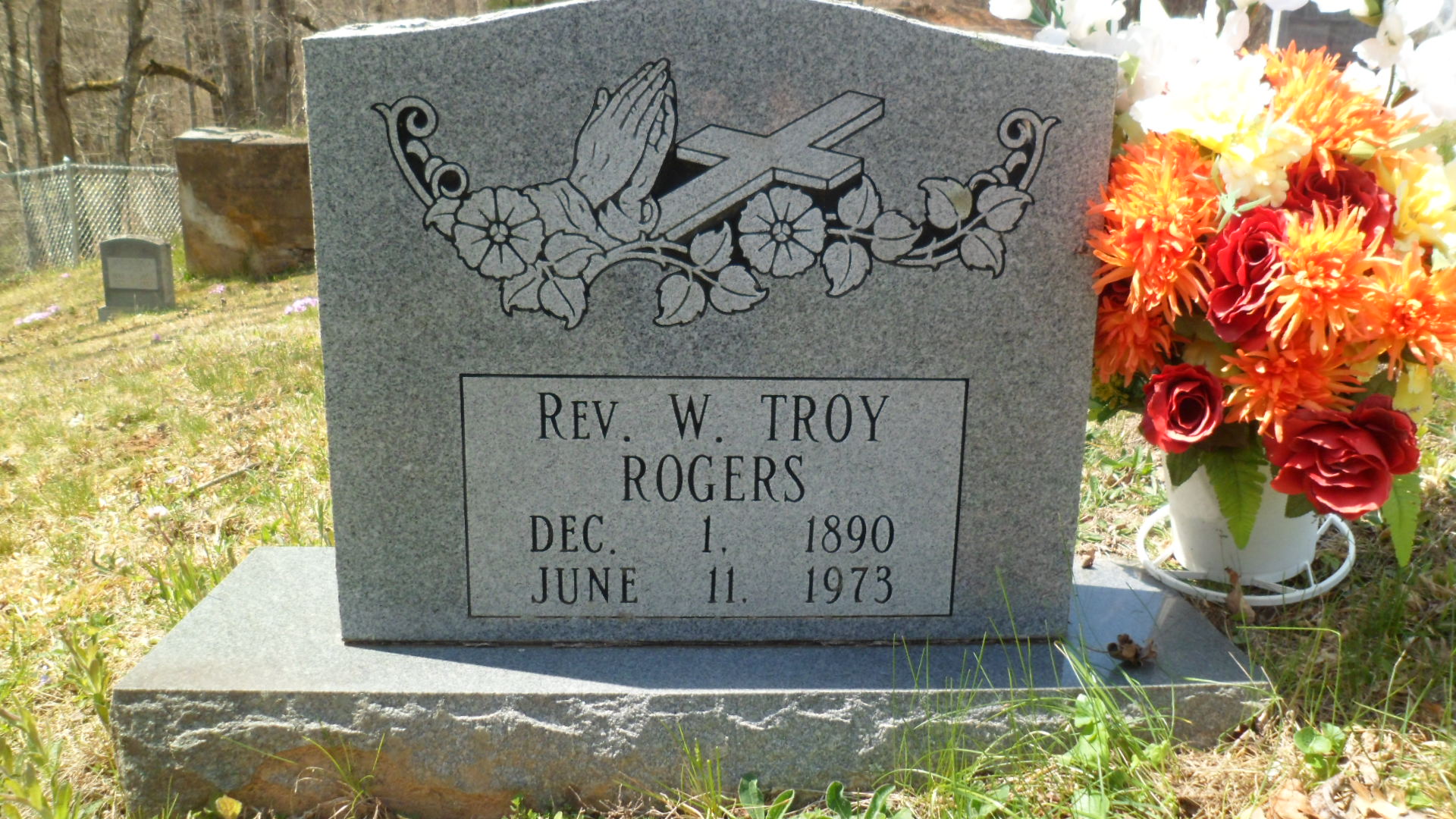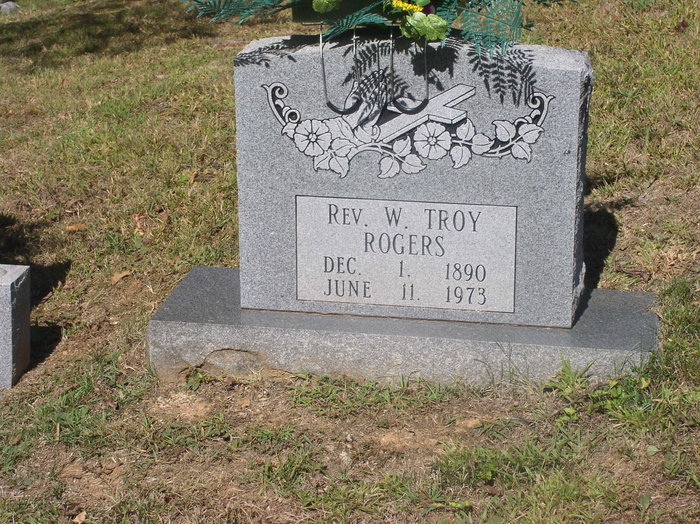TROY ROGERS
Jackson County Heritage Vol II article 618
There are many men who live a life of service to others that are not recognized for their endeavors. This is probably true in the religious field more than any other. They are men who move through society, organizing people for the growth of their faith, belief in God, and the moral cohesion of the community. Troy Rogers was one of these men.
Troy was born in Haywood County, NC, 1 Dec 1890, the son of James Manson Rogers and Texie Emma Wilson. He was one of five boys and three girls. His brothers were Lloyd (13 April 1884-2 Dec 1975), married Fanny Parker; Vaughn, married Ada Aikens, - Hargrove, and Ollie Holtzclaw; Dewey, spouse unknown; and Jess, married Helen Baker. Sisters to Troy Rogers were Ada, who married Perry Aikens; Frances, who married Jim Elkins, and Ruth, who married Shuford Ballard.
Troy's early schooling was at a one-room, one-teacher school, the typical arrangement in our mountain area. There were no electric lights, and water was carried in a bucket from a spring. The children walked to school carrying their lunch picnic-style in a basket, or individually, in a bucket. Troy earned a teacher's certificate from Cullowhee Normal School.
On 12 Dec. 1912 Troy married Ella "Mae" Nicholson, daughter of Samuel "Lem" Nicholson (11 Dec 1863-6 Feb 1950) and Mary Hicks Ashe (26 Sep 1869-14 May 1951). Mae had two brothers, Robert (18 Aug 1899-6 Nov 1990) who married Delsie Oxner, Alma Parker, and Mary Keener, and Lawrence, who married Lizzie Wiggins. She also had two sisters: Belle, who married Jeter Hoyle, and Beth (11 Jan 1896-5 Apr 1990), who married Dave Bryson.
Troy and Mae lived on the headwaters of Wayehutta Creek, a short distance below Soap Stone Gap. The house was two-story frame construction, weather boarded, with no electricity or running water. The spring was unique the water boiled up from a rock carved in a bowl shape. It is thought to have been carved by Indians before the white man settled here.
Troy and Mae had three children. Mary Lee Rogers (11 Mar 1914), married Wayne Hoyle (30 Apr 1912). James Rogers (1921-10 Dec 1991) married Ada Frizzell (6 Nov 1925-27 Dec 1991) and Geneva Ensley. Daisy Rogers (born 1931) married Gale Hoyle.
Born to Mary Lee and Wayne Hoyle were Bill, Dan, Terry, Nancy, and Gary Hoyle. Born to James and Ada Rogers were Clifton, Linda, Judy, and Donna Rogers. Born to Daisy and Gale Hoyle were Eddie, Donnie, Pat, Roger, Joe, and Charles Hoyle.
Troy Rogers was ordained a Baptist minister around 1919. He helped organize the Black Mountain Baptist Church about that time and was always active in the Tuckaseigee Missionary Baptist Association. Mary Lee said, "He was always going to them union meetings," the name the association went by in the early days.
In searching the minutes of the association from 1919 to 1970, I found Troy mentioned as a delegate from the Black Mountain church in 1927. He was carried on their roll of ministers from that time. His name was mentioned in 1932 and 1935 as chairman of the committee for reporting the deaths of the past year. Troy was never a pastor of a church, and none of his writings are in the minutes of the association. I have heard (third party) of Troy's writing messages other ministers used and took credit for. He left a reputation of being a competent mediator in association meetings, always in the background, seeking no notoriety for himself. People like him are the glue that holds organizations together and are the building blocks for a good community.
In the middle 1920's Troy worked for the Powell and Denning Lumber Company when they logged the Wayehutta watershed. He worked for the Gennett Lumber Company and also at Barber's Orchard. Troy worked on the construction projects of Western Carolina University. He moved his family to Cullowhee in 1928 to be closer to the school for the children. There were few busses in those days, and children walked to school. Troy never owned a car; he rode horseback or walked where he needed to go.
In August 1940 Jackson County was hit with a disastrous flood. The Tuckaseigee River and some of its tributaries flooded, washing away several houses and many bridges. Troy had moved back to Wayehutta and was on Old Bald mountain camping and cattle hunting during the rain. The family was concerned for his welfare until he came walking in a day or two later.
When I knew Troy. he usually wore a brown dress coat and brown felt hat. He had a thing about the hat, wearing it all the time. People who knew him well said it was the first thing he put on in the morning and the last thing off at night. Troy was a small man, weighing about 125 pounds. He had bright, round eyes and a short nose that turned up at the end. He laughed easily with a nasal sound. He made me feel he enjoyed my company, always stopping for a conversation. (The above material was written by J.V. Hoyle, with genealogical data added by Joy Phillips Hoyle. Robert C. Blanton then added the following comments.)
The things J.V. Hoyle has said about Troy Rogers would be hard to improve upon by someone younger than Mr. Hoyle. However, my own recollection of Mr. Rogers is that he was a person that small children loved to see coming for he, being better traveled then we, brought to us a picture of a much larger world than our small community. Mr. Hoyle spoke of Troy's walking, and I testify to the accuracy of his statement but add that Troy often carried an oil lantern and sometimes left it in a hollow tree along with his shotgun when daylight arrived. When Troy stopped using the mountain trails it was not long before they were grown up and in many places became impassable.
Mr. Hoyle mentioned Troy's association with the Tuckaseigee Baptist Association. In his later years I often took Troy to the annual meeting. He loved the people called Baptist and worked many hours contacting preachers and lay leaders to keep the association intact.
I took Troy to his last associational meeting at Cullowhee Baptist Church. One of the hymns sung that day was "Sweet Hour of Prayer." On the way home that day, Troy said, "If nothing else was accomplished today, that song 'Sweet Hour of Prayer' was worth it all." I suppose that comment from Mr. Rogers expresses best the philosophy, the faith, and dedication of a man who lived his unassuming life amidst a simple people, ministering in the full assurance that what history books and newspapers never notice, the God of all the universe never misses.
Troy Rogers died 11 June 1973 and is buried at the Lower Coward Cemetery on Caney Fork.
Submitted by: Mary Lee Rogers Hoyle, Sylva, NC
Sources: J. Vernon Hoyle, Robert C. Blanton, personal knowledge of Mary Lee Hoyle.
TROY ROGERS
Jackson County Heritage Vol II article 618
There are many men who live a life of service to others that are not recognized for their endeavors. This is probably true in the religious field more than any other. They are men who move through society, organizing people for the growth of their faith, belief in God, and the moral cohesion of the community. Troy Rogers was one of these men.
Troy was born in Haywood County, NC, 1 Dec 1890, the son of James Manson Rogers and Texie Emma Wilson. He was one of five boys and three girls. His brothers were Lloyd (13 April 1884-2 Dec 1975), married Fanny Parker; Vaughn, married Ada Aikens, - Hargrove, and Ollie Holtzclaw; Dewey, spouse unknown; and Jess, married Helen Baker. Sisters to Troy Rogers were Ada, who married Perry Aikens; Frances, who married Jim Elkins, and Ruth, who married Shuford Ballard.
Troy's early schooling was at a one-room, one-teacher school, the typical arrangement in our mountain area. There were no electric lights, and water was carried in a bucket from a spring. The children walked to school carrying their lunch picnic-style in a basket, or individually, in a bucket. Troy earned a teacher's certificate from Cullowhee Normal School.
On 12 Dec. 1912 Troy married Ella "Mae" Nicholson, daughter of Samuel "Lem" Nicholson (11 Dec 1863-6 Feb 1950) and Mary Hicks Ashe (26 Sep 1869-14 May 1951). Mae had two brothers, Robert (18 Aug 1899-6 Nov 1990) who married Delsie Oxner, Alma Parker, and Mary Keener, and Lawrence, who married Lizzie Wiggins. She also had two sisters: Belle, who married Jeter Hoyle, and Beth (11 Jan 1896-5 Apr 1990), who married Dave Bryson.
Troy and Mae lived on the headwaters of Wayehutta Creek, a short distance below Soap Stone Gap. The house was two-story frame construction, weather boarded, with no electricity or running water. The spring was unique the water boiled up from a rock carved in a bowl shape. It is thought to have been carved by Indians before the white man settled here.
Troy and Mae had three children. Mary Lee Rogers (11 Mar 1914), married Wayne Hoyle (30 Apr 1912). James Rogers (1921-10 Dec 1991) married Ada Frizzell (6 Nov 1925-27 Dec 1991) and Geneva Ensley. Daisy Rogers (born 1931) married Gale Hoyle.
Born to Mary Lee and Wayne Hoyle were Bill, Dan, Terry, Nancy, and Gary Hoyle. Born to James and Ada Rogers were Clifton, Linda, Judy, and Donna Rogers. Born to Daisy and Gale Hoyle were Eddie, Donnie, Pat, Roger, Joe, and Charles Hoyle.
Troy Rogers was ordained a Baptist minister around 1919. He helped organize the Black Mountain Baptist Church about that time and was always active in the Tuckaseigee Missionary Baptist Association. Mary Lee said, "He was always going to them union meetings," the name the association went by in the early days.
In searching the minutes of the association from 1919 to 1970, I found Troy mentioned as a delegate from the Black Mountain church in 1927. He was carried on their roll of ministers from that time. His name was mentioned in 1932 and 1935 as chairman of the committee for reporting the deaths of the past year. Troy was never a pastor of a church, and none of his writings are in the minutes of the association. I have heard (third party) of Troy's writing messages other ministers used and took credit for. He left a reputation of being a competent mediator in association meetings, always in the background, seeking no notoriety for himself. People like him are the glue that holds organizations together and are the building blocks for a good community.
In the middle 1920's Troy worked for the Powell and Denning Lumber Company when they logged the Wayehutta watershed. He worked for the Gennett Lumber Company and also at Barber's Orchard. Troy worked on the construction projects of Western Carolina University. He moved his family to Cullowhee in 1928 to be closer to the school for the children. There were few busses in those days, and children walked to school. Troy never owned a car; he rode horseback or walked where he needed to go.
In August 1940 Jackson County was hit with a disastrous flood. The Tuckaseigee River and some of its tributaries flooded, washing away several houses and many bridges. Troy had moved back to Wayehutta and was on Old Bald mountain camping and cattle hunting during the rain. The family was concerned for his welfare until he came walking in a day or two later.
When I knew Troy. he usually wore a brown dress coat and brown felt hat. He had a thing about the hat, wearing it all the time. People who knew him well said it was the first thing he put on in the morning and the last thing off at night. Troy was a small man, weighing about 125 pounds. He had bright, round eyes and a short nose that turned up at the end. He laughed easily with a nasal sound. He made me feel he enjoyed my company, always stopping for a conversation. (The above material was written by J.V. Hoyle, with genealogical data added by Joy Phillips Hoyle. Robert C. Blanton then added the following comments.)
The things J.V. Hoyle has said about Troy Rogers would be hard to improve upon by someone younger than Mr. Hoyle. However, my own recollection of Mr. Rogers is that he was a person that small children loved to see coming for he, being better traveled then we, brought to us a picture of a much larger world than our small community. Mr. Hoyle spoke of Troy's walking, and I testify to the accuracy of his statement but add that Troy often carried an oil lantern and sometimes left it in a hollow tree along with his shotgun when daylight arrived. When Troy stopped using the mountain trails it was not long before they were grown up and in many places became impassable.
Mr. Hoyle mentioned Troy's association with the Tuckaseigee Baptist Association. In his later years I often took Troy to the annual meeting. He loved the people called Baptist and worked many hours contacting preachers and lay leaders to keep the association intact.
I took Troy to his last associational meeting at Cullowhee Baptist Church. One of the hymns sung that day was "Sweet Hour of Prayer." On the way home that day, Troy said, "If nothing else was accomplished today, that song 'Sweet Hour of Prayer' was worth it all." I suppose that comment from Mr. Rogers expresses best the philosophy, the faith, and dedication of a man who lived his unassuming life amidst a simple people, ministering in the full assurance that what history books and newspapers never notice, the God of all the universe never misses.
Troy Rogers died 11 June 1973 and is buried at the Lower Coward Cemetery on Caney Fork.
Submitted by: Mary Lee Rogers Hoyle, Sylva, NC
Sources: J. Vernon Hoyle, Robert C. Blanton, personal knowledge of Mary Lee Hoyle.
Family Members
Sponsored by Ancestry
Advertisement
Explore more
Sponsored by Ancestry
Advertisement














